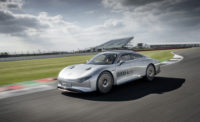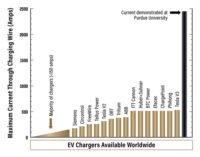WASHINGTON—Several U.S. states are taking comprehensive steps to help enable residents and businesses to use and charge electric vehicles, but other have done little to reduce barriers, according to a new report released by the American Council for an Energy-Efficient Economy (ACEEE).
The State Transportation Electrification Scorecard reveals that California and New York are leading the way, while Arkansas and Mississippi are lagging far behind. Most of the other top-10 states are either in the East (Maryland, Massachusetts, New Jersey and Vermont) or on the West Coast (Oregon and Washington).
“California is far and away the national leader in enabling the use of EVs,” says Bryan Howard, state policy director at ACEEE and lead author of the report. “It is the only state to set deadlines for electrifying transit buses, heavy trucks and commercial vehicles. The state is also one of few to offer assistance for lower-income drivers replacing older, high-polluting cars with zero- or near-zero-emissions vehicles, and it plans to deploy chargers in economically distressed and environmental justice communities.
“While many states have taken promising steps to electrify transportation, all have considerable room to improve their policies,” explains Howard. “Ultimately, a full shift to affordable and accessible electrified vehicles—powered entirely by zero-carbon energy—will be necessary to bring emissions to zero and support livable communities.
“Transitioning to electric vehicles is vital for the climate and for reducing costs for households and businesses,” claims Howard. “The leading states are embracing this transition, but many more are just starting, even as the automakers are preparing a burst of new electric models.
“Most of today’s electric vehicles cause significantly fewer emissions overall than their gas-powered counterparts, and many have lower lifetime ownership costs, thanks to low fueling and maintenance expenses,” adds Howard. “But, the higher initial purchase cost and lack of access to vehicle charging remain barriers for many households and fleet owners—obstacles some states are mitigating by offering incentives to buy EVs, adding more charging options and setting lower electric rates at preferred charging times.”






